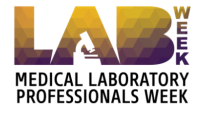
Overview
Dr. Peter Canoll is a Professor of Pathology & Cell Biology and Neurosurgical Sciences at Columbia University Irving Medical Center, where he also serves as the Director of Neuropathology. He earned his M.D. and Ph.D. from the New York University School of Medicine, followed by training in Anatomic Pathology at New York Presbyterian Hospital/Cornell Medical Center and a fellowship in Neuropathology at New York Presbyterian Hospital/Columbia University. Dr. Canoll is board-certified in both Anatomic Pathology and Neuropathology by the American Board of Pathology.
Areas of Expertise / Conditions Treated
- Gliomas
Academic Appointments
- Professor of Pathology & Cell Biology at CUMC
Administrative Titles
- Director of Neuropathology
Hospital Affiliations
- NewYork-Presbyterian / Columbia University Irving Medical Center
Gender
- Male
Schedule an Appointment
Connect Patient Portal
For existing patients, login to make an appointment, view documentation or contact your care provider.
Credentials & Experience
Education & Training
- New York University School of Medicine
- Residency: NewYork-Presbyterian Hospital/Weill Cornell Medical Center
Board Certifications
- Neuropathology
- Anatomic Pathology
Honors & Awards
1996 Merck Scholar
1998 Distinguished Performance in Research, Associated Medical Schools of New York
2000 Inspiration Award for Pediatric Brain Tumor Research, Children’s Brain Tumor Foundation
2001 Sontag Foundation Award, American Brain Tumor Association
2008 Teacher of the year award for outstanding small group preceptor
2009 Adult Translational Award, Society for Neuro-oncology
2015 Fundamentals outstanding teacher award
Research
Dr. Canoll’s research focuses on understanding glioma development's molecular and cellular mechanisms and the interactions between glioma cells and the brain microenvironment. His laboratory uses genetically engineered mouse models that mimic the histological and molecular characteristics of human gliomas to investigate the cellular changes that drive gliomagenesis. As the Director of Neuropathology, Dr. Canoll plays a key role in Columbia’s Brain Tumor Program, serving as the primary neuropathologist in all clinical trials. Over the past 14 years, he has analyzed and diagnosed hundreds of brain tumors, with the goal of translating his research and clinical expertise into more effective diagnostic tools and treatments for brain tumors.
Research Interests
- Mechanisms of glioma growth and invasion
Selected Publications
1. Receptor Tyrosine Kinases And Phosphatases In Glial Proliferation And Differentiation: During my graduate studies at NYU, I worked with Jose Musacchio and Joesph Schlessinger to identify a new family of receptor tyrosine phosphatases that are selectively expressed in the brain. I used in situ hybridization to determine the cell-specific expression patterns of several of these genes and discovered that PTPRZ (aka RPTP-beta) is expressed in glial progenitors and undergoes alternative splicing during glial differentiation. I also worked with Jim Salzer (NYU) to characterize the role of receptor tyrosine kinases (ErbB 2, 3, and 4) in glial development, and showed that neuregulins (neuron derived ligands for ErbB receptors) can control the proliferation and differentiation of oligodendrocyte progenitor cells (OPCs).
a. Canoll, P.D., Barnea, G., Levy, J.B., Sap, J., Ehrlich, M., Silvennoinen, O., Schlessinger, J. and Musacchio, J.M. The expression of a novel receptor-type tyrosine phosphatase suggests a role in morphogenesis and plasticity of the nervous system. Brain Research Developmental Brain Research, 1993, 75:293-298.
b. Canoll, P.D., Petanceska, S., Schlessinger, J. and Musacchio, J.M. Three forms of RPTP-b are differentially expressed during gliogenesis in the developing rat brain and during glial cell differentiation in culture. Journal of Neuroscience Research, 1996, 44:199-215.
c. Canoll, P.D., Musacchio, J.M., Hardy, R., Reynolds, R., Marchionni, M.A. and Salzer, J.L. GGF/Neuregulin promotes the proliferation and survival and inhibits the differentiation of cells in the oligodendrocyte lineage. Neuron, 1996, 17: 229-243.
d. Canoll, P.D., Kraemer, R., Teng, K.K., Marchionni, M.A., Salzer, J.L. GGF/Neuregulin induces a phenotypic reversion of differentiated oligodendrocytes. Molecular Cellular Neuroscience, 1999, 13: 79-94.
2. Adult Glial Progenitors As The Cell Of Origin For Proneural Glioma: My research over the last 10 years has focused on understanding the cellular and molecular mechanisms of glial transformation and gliomagenesis. Using stereotaxic delivery of transforming retroviruses, my laboratory was the first to show that OPCs in the adult what matter that can give rise to malignant gliomas. We have also developed several genetically engineered mouse models to determine the effects of specific genetic alterations on adult glial progenitors and to characterize how these alterations lead to tumor formation. Using cross-species comparison of genomic and transcriptomic analyses we discovered that these mouse models resemble a specific subtype of human glioma (Proneural GBM). We also identified the master regulator transcription factors that control the Proneural phenotype and characterized how this transcriptional network changes during glial transformation and glioma progression. In collaboration with Patrizia Casaccia (Mount Sinai Medical School) we have shown how the regulation of OPC proliferation and differentiation is altered during glial transformation. This work has revealed several potential therapeutic targets, such as Topoisomerase IIA, which appear to be particularly important for the treatment of proneural GBM.
a. Assanah M, Lockhead R, Ogden A, Bruce J, Goldman J, Canoll P. Glial progenitors in adult white matter are driven to form malignant gliomas by PDGF expressing retroviruses The Journal of Neuroscience, 2006, 26 (25) 6781-6790.
b. Lei L, Sonabend AM, Guarnieri P, Soderquist C, Ludwig T, Rosenfeld, S, Bruce J, Canoll P, Glioblastoma models reveal the connection between adult glial progenitors and the Proneural phenotype. PLOS ONE, 2011.
c. Sonabend AM, Bansal M, Guarnieri P, Lei L, Amendolara B, Soderquist C, Leung R, Yun J, Sisti J, Kennedy B, Bruce S, Bruce, R, Shakya R, Ludwig T, Rosenfeld SS, Sims PA, S, Bruce JN, Califano A, Canoll P, The Transcriptional Regulatory Network of Proneural Glioma Determines the Genetic Alterations Selected During Tumor Progression. Cancer Research, 2014, 74(5), 1440-1451. doi: 10.1158/0008-5472.CAN-13-2150
d. Magri, L, Swiss, VA, Jablonska, B, Lei, L, Pedre, X, Walsh, M, Zhang, W, Gallo, V, Canoll, P, Casaccia, P E2F1 Coregulates Cell Cycle Genes and Chromatin Components during the Transition of Oligodendrocyte Progenitors from Proliferation to Differentiation, The Journal of Neuroscience, 2014, 22 January 34(4): 1481-1493
3. Preclinical Models To Test The Effects Of Targeted Therapy In Glioma: During the course our mechanistic studies on gliomagenesis, my lab has developed several new rodent glioma models, including a variety of mouse models that harbor different genetic alterations and fluorescent/bioluminescent reporter systems. These models have proven to be powerful systems for preclinical studies, because tumors that recapitulate the histopathological and molecular features of human glioma form with 100% penetrance in the context of an intact immune system, and response to treatment can be monitored by bioluminescence imaging. In collaboration with Jeffrey Bruce's lab at Columbia University, we have used these animal models to test the effects of novel targeted therapies and drug delivery systems, including intracerebral convection enhanced delivery (CED) of chemotherapeutics directly into brain tumors. Most notably, these studies have shown that drugs that target topoisomerases (Topotecan and Etoposide) are highly effective against proneural glioma.
a. Lopez KA, Tannenbaum AM, Assanah MC, Linskey KR, Yun JP, Kangarlu A, Gil O, Canoll P, Bruce JN, Convection-enhanced delivery of topotecan into a PDGF-driven model of glioblastoma prolongs survival and ablates both tumor initiating cells and recruited glial progenitors. Cancer Reseach, 71, 3963-3971, 2011.
b.Sonabend AM, Yun J, Lei L, Leung R, Soderquist C, Crisman C, Gill BJ, Carminucci A, Sisti J, Castelli M, Sims PA, Bruce JN, Canoll P, Murine cell line model of Proneural glioma for evaluation of anti-tumor therapies. J Neurooncol. 2013 May;112(3):375-82. doi: 10.1007/s11060-013-1082-x. Epub 2013 Mar 16
c. Sonabend AM, Carminucci AS, Amendolara B, Bansal M, Leung R, Lei L, Realubit R, Li H, O J, Karan C, Yun J, Showers C, Rothcock R, Califano A, Canoll P, Bruce JN, Convection-Enhanced Delivery Of Etoposide Is Effective Against Murine Proneural Glioblastoma, Neuro-oncology, 2014
d. Lu F, Chen Y, Zhao C, Wang H, He D, Xu L, Wang J, He X, Deng Y, Lu EE, Liu X, Verma R, Bu H, Drissi R, Fouladi M, Stemmer-Rachamimov AO, Burns D, Xin M, Rubin JB, Bahassi el M, Canoll P, Holland EC, Lu RQ. "Olig2-Dependent Reciprocal Shift in PDGF and EGF Receptor Signaling Regulates Tumor Phenotype and Mitotic Growth in Malignant Glioma." Cancer Cell, 2016, 29(5): 669-683.
4. Mechanisms Of Glioma Invasion: My lab has developed methods to monitor glioma cell migration in living slices of brain tissue. Using this system we have characterized the dynamics of glioma motility and have identified the paths of glioma infiltration along white matter tracks and blood vessels. In collaboration with Steven Rosenfeld (now at the Cleveland Clinic), we identified nonmuscule myosin II (NMMII) as an essential motor for in glioma invasion, and showed that blocking NMMII or its upstream regulator Rho Kinase (ROCK), can inhibit glioma invasion. We are currently testing the therapeutic potential of targeting ROCK and NMMII in glioma.
a. Farin A, Suzuki SO, Weiker M, Goldman JE, Bruce JN, Canoll P. Transplanted glioma cells migrate and proliferate on host brain vasculature: a dynamic analysis. Glia, 2006, 53(8) 799-808.
b. Beadle, C., Assanah, M.C., Monzo, P., Vallee, R., Rosenfeld, S.S., and Canoll, P. The Role of Myosin II in Glioma Invasion of the Brain. Molecular biology of the cell, 2008, 19(8), 3357-3368.
c. Assanah, M.C., Bruce, J.N., Suzuki, S.O., Chen, A., Goldman, J.E., Canoll, P. "PDGF stimulates the massive expansion of glial progenitors in the neonatal forebrain" Glia, 2009, 57, 1835-47.
d. Ivkovic S, Beadle, C, Swanson K, Massey S, Noticewala, S, Bresnik A, Canoll P, and Steven Rosenfeld, Direct Inhibition Of Myosin II Effectively Blocks Glioma Invasion In The Presence Of Multiple Motogens. Molecular Biology of the Cell, 2012, 23: 533-542.
5. Cell-Type Specific Alterations At The Infiltrative Margins Of Glioma: Regions of non-enhancing tumor at the infiltrative margin are virtually always left behind after surgery for glioma, and it is this residual tissue that gives rise to recurrence, and which neuro-oncologists and radiation oncologist must treat. To address this important problem, Jeff Bruce, Peter Sims and I have initiated a large-scale, multi-investigator effort at Columbia University to collect and analyze radiographically localized biopsies from the contrast-enhancing core and non-enhancing margins of GBM. One major challenge to analyzing tissue at the margins of GBM is that it contains a complex mixture of infiltrating glioma cells and non-neoplastic brain cell. To address this issue, we have used a computational approach to deconvolve the homogenate expression data into cell type-specific expression profiles and identified subtype-specific patterns in cellular composition, and showed how these patterns are altered in post-treatment recurrent tumor.
In collaboration with Steven Rosenfeld, we have performed computational deconvolution of RNA-seq data from radiographically localized biopsies to determine the cell type-specific expression patterns of molecular motors in the contrast enhancing center and non-enhancing margins of human GBM. These studies have revealed that the mitotic kinesin KIF11 is significantly upregulated in GBM, with the highest expression in OPC-like/Proneural glioma cells-a pattern that was most pronounced when examining the samples from the non-enhancing margins of GBM.
In collaboration with Peter Sims' lab, we engineered a new mouse model of glioma in which the retrovirus-transformed cells harbor the RiboTag allele. This model allows cell type-specific expression of HA-tagged polysomes, so that actively translated mRNA can be purified from brain tissue homogenate by immunoprecipitation and analyzed by RNA-seq and Ribosome profiling. Using this approach, we showed that translation efficiency (the number of ribosomes per transcript) varies across cell types and is significantly lower in proneural glioma cells compared to normal brain. These findings suggest that proneural glioma cells are under translational stress, and this may represent a targetable vulnerability in the treatment of these tumors. More recently, we have used ribosome profiling to characterize neuron-specific translation in the cerebral cortex of CamK-cre/RiboTag mice.
a. Gill B, Pisapia D, Malone H, Goldstein H, Lei L, Sonabend A, Yun J, Samanamud J, Sims J, Teich AF, Sheth S, McKhann G, Sisti M, Bruce JN, Sims PA, Canoll P, MRI-localized biopsies reveal subtype-specific differences in molecular and cellular composition at the margins of Glioblastoma. 2014, PNAS, 111, 12550-12555.
b. Gonzalez C, Sims JS, Hornstein N, Mela A, Garcia F, Lei L, Gass DA, Amendolara B, Bruce JN, Canoll P, Sims PA, Ribosome Profiling Reveals a Cell-Type Specific Translational Landscape in Glioma. 2014, J. Neuroscience, 34, 10924-10936.
c. Venere M, Horbinski CM, Crish JF, Vasanji A, Major J, Burrows A, Chang C, Prokop J, Wu Q, Sims PA, Canoll P, Summer MK, Rosenfeld SS, Rich JN, The Mitotic Kinesin KIF11 is a Central Driver of Invasion, Proliferation, and Self Renewal in Glioblastoma.2015, Science Translational Medicine 7, 304ra143.
d. Hornstein N, Torres D, Das Sharma S, Tang G, Canoll P, Sims PA. Ligation-free ribosome profiling of cell type-specific translation in the brain. 2016 Genome Biol 17, 149.
For a complete list of publications, please visit PubMed.gov

